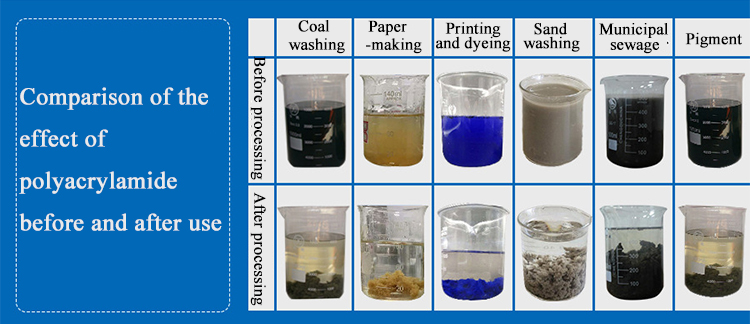
Email: qdlphg@outlook.com
Tel:+8615890155688
Tel:86-371-64570222
WeChat:15890155688
WhatsApp:+8615890155688

Email: qdlphg@outlook.com
Tel:+8615890155688
Tel:86-371-64570222
WeChat:15890155688
WhatsApp:+8615890155688


Cationic Polyacrymalide Flcculant PAM
Polyacrylamide is a synthetic polymer formed from acrylamide monomers. It is a versatile chemical compound with a wide range of industrial, agricultural, and environmental applications. Polyacrylamide is known for its high molecular weight and the ability to form a gel-like substance when hydrated. The polymer can be linear or have various degrees of branching, depending on the production process.
Product introduction

Polyacrylamide (PAM) is a synthetic water-soluble polymer that has a wide range of applications in the oil and gas industry. In the oil field, PAM is used as a drilling fluid additive, a viscosity modifier, a friction reducer, and a flocculant.
1. Drilling fluid additive: PAM is added to drilling fluids to increase the viscosity and stability of the drilling fluid. It helps to prevent the loss of drilling fluid into porous formations and also helps to carry the cuttings to the surface.
2. Viscosity modifier: PAM can modify the viscosity of oil and water-based fluids. When added to an oil-based fluid, it can increase the viscosity and provide better lubricity. When added to a water-based fluid, it can decrease the viscosity and improve the fluid's flow properties.
3. Friction reducer: PAM can reduce the friction between the drilling fluid and the borehole wall. This helps to minimize the pressure required to circulate the fluid, which can lead to a reduction in the wear and tear on drilling equipment.
4. Flocculant: PAM is also used as a flocculant in the oil field. It helps to separate solids from liquids and can be used to remove suspended solids from produced water. This can help to reduce the environmental impact of oil production and make the produced water suitable for reuse.

Related products

90 Chlorine Granular TCCA

Wastewater Wood Coal Powder Activated Carbon

Coal Columnar Price Activated Carbon for Water Purifier

Coal Columnar 4mm Activated Carbon
<< Previous Page
Next Page >>